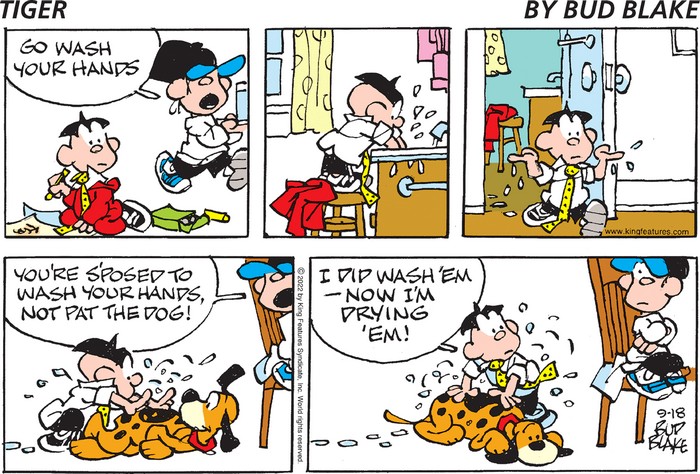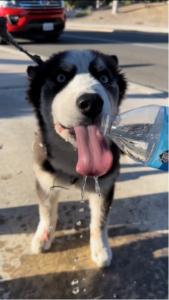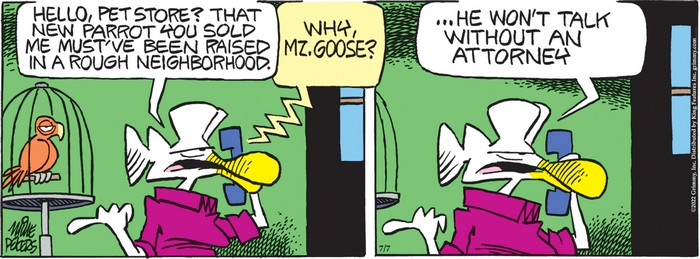
 ∙ Meet the newest member of the Ventura City Fire Department — Hope.
∙ Meet the newest member of the Ventura City Fire Department — Hope.
As a therapy dog, Hope has the very important job of providing comfort and support to firefighters after they’ve had a difficult run. She also visits children in the community who have experienced a tragedy, to help them start to heal.
∙ SPAN Thrift Store is open to the public and looking for donations of adult clothing, household items and tools. SPAN Thrift Store regularly provides $10 spay and neuter clinics for low income households for cats and dogs. Upcoming clinics: Tuesday, October 11th, parking lot of Shiells Park, 649 C St, Fillmore; Tuesday, October 25th, parking lot of SPAN Thrift Store, 110 N. Olive St., Ventura. Please call to schedule an appointment (805) 584-3823
∙ Beginning September 18th, all dog owners now have a Happy Hour destination just for them and their 4 legged friends at Peirano’s! They have created a menu just for your dog. They can have a dog gone good time sipping/slurping on bacon water and chomping on salon skin treats, or scrambled eggs. Live music every Saturday and Sunday afternoon from 3-5 pm and Friday evening from 6-8, Sunday Brunch from 1120-2:00pm.
∙ Alexandra Horowitz has been studying the inner lives of humanity’s best friend for about two decades, including in her current role as head of the Dog Cognition Lab at Barnard College in New York. Since 2009, Horowitz has also been a book author, translating the latest findings from the field of canine science for the general public.
In her book The Year of the Puppy Horowitz dives deep into the earliest stages of being a dog. But this book comes with an added personal angle: It details Horowitz and her family’s journey in raising their own puppy, Quiddity, from the very start of life. Among other things, Horowitz discusses why new dog moms are always licking their puppies; why puppies aren’t too fussy about the nipples they nurse on; and how everything from a mom’s diet to the placement of a fetus within the uterus can subtly affect a dog’s later development.
∙ A national study finds millions of pets that were adopted during the pandemic weren’t spayed or neutered, which is causing severe overcrowding at animal shelters and a sharp rise in euthanasia.
Josh Fiala, who oversees the spay/neuter program at the Animal Rescue League of Iowa, says those important surgeries did continue throughout the COVID years at the state’s largest non-profit shelter, though veterinarians are becoming scarce.
Fiala says it’s fortunate the ARL was able to maintain its schedule during the past two years as he says spaying and neutering of pets is vital. “It helps control the pet population. Our shelters are full enough as it is. We do not need more pets in the area,” Fiala says. “If people want to find animals, there’s definitely plenty in shelters across the U.S. And it does, from a health perspective, from a behavior perspective, it’s shown to have benefits as well.”
∙ According to a recent paper published in the journal Animal Cognition, dogs store key sensory features about their toys—notably what they look like and how they smell—and recall those features when searching for the named toy.
Prior studies suggested that dogs typically rely on vision, or a combination of sight and smell, to locate target objects. A few dogs can also identify objects based on verbal labels, which the authors call “gifted word learner” (GWL) dogs. “Just like humans, GWL dogs not only recognize the labeled objects—or categories of objects—as stimuli they have already encountered, but they also identify them among other similarly familiar named objects, based on their verbal labels,” the authors wrote. They wanted to investigate whether GWL dogs have an enhanced ability to discriminate and/or recognize objects compared to typical dogs.
To find out, they conducted two separate experiments. The first involved 14 dogs, three of which were GWL dogs (all border collies): Max, Gaia, and Nalani. All three had participated in prior studies and demonstrated they knew the names of more than 20 dog toys. Most of the dogs were tested in the lab; three were tested in their homes using the same experimental setup. The experimenter and the dog’s owner stood with the dog in one room. An adjacent room held dog toys. The rooms were connected by a corridor and separated by heavy curtains. All the windows were covered with dark nylon sheets.
The same 10 unfamiliar dog toys were used with all the dogs, and the toys were of different shapes, sizes, colors, and materials. The experimenter randomly divided the toys into two sets, and then picked one toy randomly out of each set to be the target toy.
After the training phase, each dog was tested in both light and dark conditions with the corridor and toy room lights turned off. They were asked 10 times to retrieve the target toy from among the other four toys in a set, which had been randomly scattered on the floor. The toys were reshuffled between each iteration. Everything was recorded using an infrared video camera, and the researchers recorded not just toy selection and retrieval but also searching and sniffing behavior.
The second experimental setup and location were the same as the first, but only the three GWL dogs were tested, along with an additional GWL dog named Whisky. All four knew the names of the 20 toys used in the experiment, scattered randomly on the floor. If the dog retrieved the correct toy, it was rewarded. Once again, the dogs were tested in both light and dark conditions.
All the dogs in the first experiment—regardless of whether they were GWL dogs or typical dogs—successfully picked out the target toys in both light and dark conditions, although it took them longer to locate the toys in the dark. Most relied on visual cues, even though dogs possess an excellent sense of smell. The GWL dogs in the second experiment were also able to select the named toys when commanded by their owners, with similar reliance on visual cues—what the toy looks like—augmented by their sense of smell (what the toy smells like), particularly in dark conditions.
According to the authors, this confirms that when dogs play with a toy, they record its features using multiple senses, creating a “multistory mental image.” They prefer to rely primarily on visual cues, but dogs can incorporate other sensory cues, most notably smell, when the conditions call for it.











